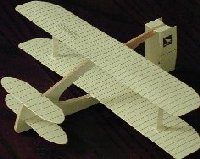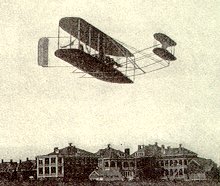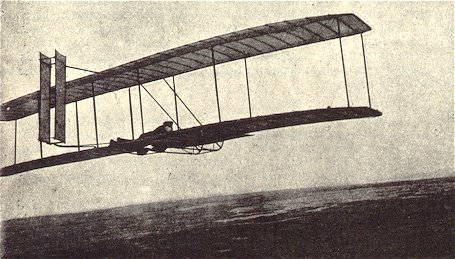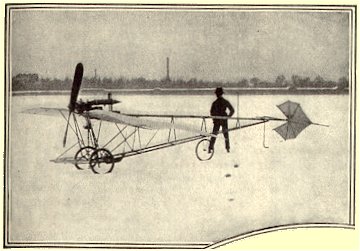The First Airplane
Today, we think about first airplanes. The University of Houston's College of Engineering presents this series about the machines that make our civilization run, and the people whose ingenuity created them.

This Christmas, my wife gave me a model of the Wright Brother's first airplane. I assembled it on the dining-room table, launched it, and it really flew. Wright Flyer ModelNow we near the hundredth anniversary of Kitty Hawk and I'm rereading How We Invented the Airplane by Orville Wright. Written as a court deposition in 1920, it was annotated and published by historian Fred Kelly after Orville's death. It opens a fine window into the genesis of the airplane.
For years I've heard from people championing other airplane inventors. But as you pursue claims from California, Texas, Connecticut, they all blur into badly documented flights that led nowhere. Brazil credits Santos-Dumont who built an airplane independently three years after the Wrights. Long after Kitty Hawk the Smithsonian Institution, which had funded Langley's two failed attempts at flight, still called him the inventor of the airplane.
But the Wright Brothers systematically built and documented a long series of controllable kites, gliders, and powered aircraft. They did their own wind-tunnel studies. Orville's article calls out a parade of prior workers: Leonardo, Cayley, Maxim, Bell, Lilienthal, Langley, Chanute, and many more. He knew perfectly well they hadn't been working in a vacuum. They'd been one in a series, perhaps the last in the series, of the people who'd brought the airplane into being.
To pilot the first Wright airplane, you lay on the bottom wing, looking out between the two horizontal stabilizers in front. Two side-by-side rudders were mounted in the rear. Two propellers, behind the wings, pushed the machine through the air. To guide the airplane in flight, the Wrights used a system of pulleys to control the rudders and warp the wings. (Moveable ailerons had to wait three years for Santos Dumont.)
The Wrights made four flights on December 17, 1903. Then they went back to Ohio to build a better airplane. During the next two years, they made a hundred and fifty eight flights. They were eventually staying aloft for over half an hour. Now the pilot was seated, and they'd added a passenger seat.
 During 1906 and 1907, they only built, they didn't fly. They dickered with the US Army and foreign buyers. They couldn't convince the Army that flight was really possible until 1908. Then the Army finally signed a contract for the first military airplane.
During 1906 and 1907, they only built, they didn't fly. They dickered with the US Army and foreign buyers. They couldn't convince the Army that flight was really possible until 1908. Then the Army finally signed a contract for the first military airplane.
While the who-was-first question wrongly dogs invention, the Wright Brothers justly do wear a crown -- but not for defining the instant when the airplane appeared. There are no such instants -- not for the light bulb, not for the computer, not for flight.
Both Wright Brothers had been serious tinkerers and builders from earliest childhood. And they'd first been drawn to flight in 1895. They began serious work on the airplane in 1899 and, ten years later, they were selling commercial airplanes in Europe and America. It was a very long haul and they were in it -- all the way from the dream, to the marketplace.
I'm John Lienhard, at the University of Houston, where we're interested in the way inventive minds work.
(Theme music)
Wright, O., How We Invented the Airplane: An Illustrated History. (Edited, with an Introduction and Commentary, by Fred C. Kelly.) New York: Publications, Inc. 1953/1988.
For more information on Santos-Dumont, click here.

The Wright Brother's last glider in flight

Santos Dumont experimenting with his airplane in winter